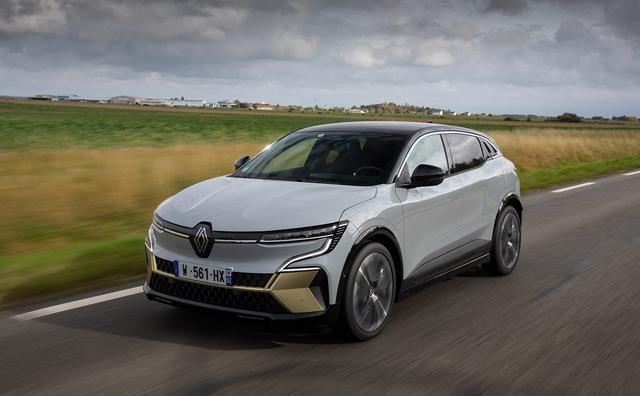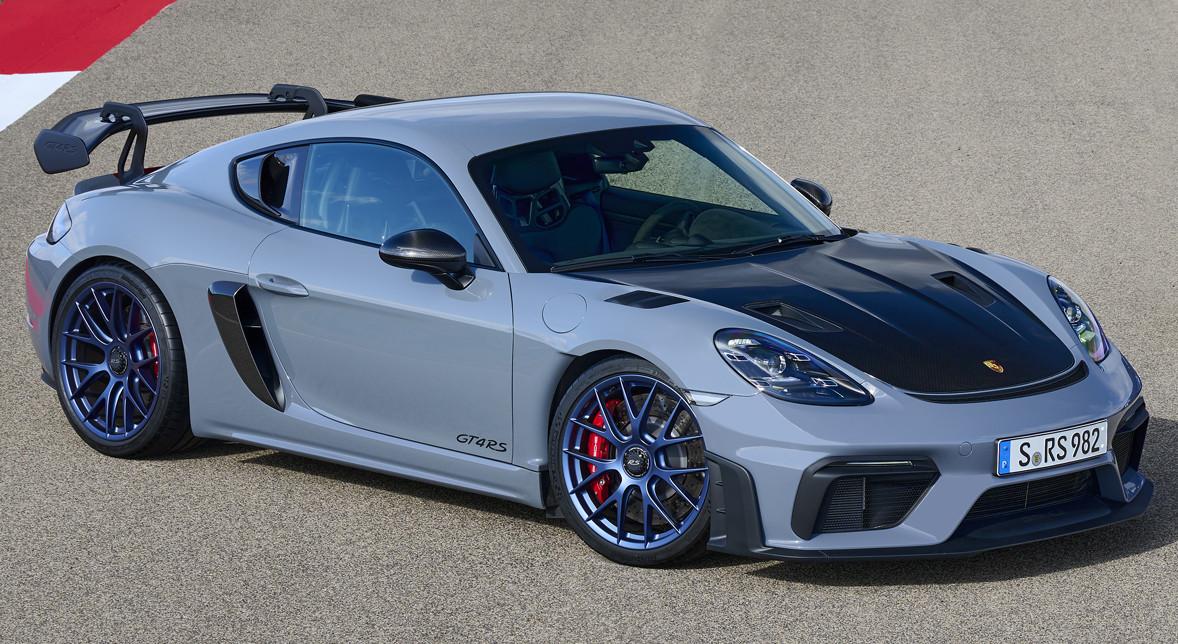Renault Mégane E-Tech test: what is the electric compact worth?
Apart from its surname, this new Mégane, entirely driven by the magic of electricity, shares no bolts or wires with the good old thermal Mégane. This is a completely new model. Funny strategy, when you want to “reconquer the C segment”, to have wanted to capitalize on a surname whose origins date back to… 1995 and which in no way evokes electricity. The only clue is the E-Tech label, still unknown to the general public. The ways of marketing are decidedly impenetrable.
The first “2.0” generation electric model, this new 100% French Mégane – it is manufactured in Douai and its batteries will be recycled in Flins – was developed in 5 years from scratch. It benefits from 10 years of Renault experience with no less than 10 billion “e-kilometres” covered by 400,000 electric vehicles (Zoe, Twizy, Twingo e, Kangoo and Master).
Aesthetically, this Mégane Electric offers no similarity with thermal. We won't complain. Inspired by the Morphoz concept car from 2019, and prefigured by the Mégane e-Vision from 2020, its very cubic line – underlined by fine light signatures – is elegant, even if the huge 20” rims seem almost disproportionate here. An impression reinforced by ultra-reduced overhangs and a length of just 4.21 m, or 15 cm less than Papa's Mégane.
Its low glazed surfaces and its very worked sides give it a solid feeling of robustness. Mention (very) well, also, to the passenger compartment with a dashboard as original in its design as neat in its presentation. It is distinguished in particular by its digital counter blocks and its central slab which meet to form an inverted L, integrating in a very discreet way, the central air vents. The whole offering a surface of up to 774 cm2! The materials ignore traditional materials and black to move towards textiles in TEP, Alcantara, genuine leather or even Nuo, a brand new fabric incorporating thin laser-cut linden leaves. In short, an atmosphere that is both refined and warm, reinforced by interior LED lighting (48 shades) based on the circadian cycle (!), which varies every half hour.
As for the habitability, despite its more compact size but thanks to its equally generous wheelbase, this Mégane E-Tech offers interior dimensions equivalent to, or even slightly higher (flat floor, floating central console, etc.), those of the thermal version, as well as a more voluminous trunk (440 litres). Ergonomics are beyond reproach with a very pleasant driving position, closer to that of a sedan than an SUV, offering good visibility and excellent rear vision thanks to large exterior mirrors; the one inside even has a camera mode.
Soft and precise road feel
The first few meters reveal a soft and precise road feel with very direct steering (two turns-one-third lock-to-lock) and damping whose firm typing is here amplified by 20'' rims. With 160 kW, the equivalent of 218 hp (a power substantially equivalent to that of a Mégane 2 RS!), and a torque of 300 Nm, the mechanics very suitably move the 1,624 kg of the machine. Accelerations and times are largely sufficient on all routes, including motorways. Note that this is a brand new wound rotor motor offering, according to Renault, better efficiency than a permanent magnet motor, and not using rare earths. A block that will animate future Alpines… Three levels of regenerative braking are available, the most powerful of which allows almost total stopping. Renault did not wish to offer the “e-pedal” function authorizing total stopping. Reason invoked: in certain markets, a segment of senior customers loses the reflex to brake and then risks accelerating...

Very incisive, the behavior enjoys a real dynamism, unusual on an electric model, traction, of this segment. A desire on the part of Renault, which wanted this to be the case on the Alliance's brand new CMF-EV platform. In addition to a center of gravity lowered by 90 mm compared to that of a thermal Mégane, thanks in particular to thin batteries (110 mm) and a very favorable weight distribution, this E-Tech benefits from a multi-link rear axle which , combined with the direct steering – lacking a hint of feeling – gives it a very agile, even lively behavior in sustained driving, somewhat reminiscent of the self-steering rear axles, very popular in the 1990s. bumpy approached with a touch of optimism, we thus caused a stall of the said rear axle, immediately corrected by the effective anti-skid ESC.
We will therefore not complain here of too polite behavior! Another observation, specific to many electric models, was the frequent loss of traction on wet ground, under the – sudden – effect of torque, which the very gripping GoodYear Efficient Grip Performance of our test car could not always stem. . Several driving modes, Eco, Comfort, Sport and Perso, are offered, which affect the strength of the steering, the engine management, the response of the accelerator or even the interior atmosphere. Another reason for satisfaction is comfort.
Cushioning typed firm but excellent seats
If the damping remains firm – a feeling amplified by the 20'' rims and the 45 profile tires – it is compensated by the comfort of the excellent seats. But above all, the soundproofing is remarkable, thanks to a new compressed soundproofing foam in which the battery is sandwiched. Which has been the subject of several patents among the 300 filed for this new Mégane. The lifts from the chassis and the wheel arches are thus reduced to their simplest expression. Added to this are double-sealed door seals, generally reserved for top-of-the-range models. In short, on board this Mégane E-Tech, we enjoy a silence worthy of a Rolls!
During this first test, on a mixed route of 115 km, and without trying to save the slightest kW, we consumed 22.6 kWh/100 km on average, which corresponds very exactly to a range of 265 km. Renault announcing a figure of 470 km according to the WLTP cycle. Thanks to the Google connectivity of its OpenR Link multimedia system, which remains permanently connected to its user's ecosystem, this Mégane E-Tech optimizes the thermal management of its battery - cooled by water and oil - by managing the temperature a few dozen minutes before the scheduled refueling stop, which is suggested to the driver on his route in order to limit refueling time. This will be, for example, 30' to recover approximately 200 km of motorway autonomy on a 130 kW super-charger, 60' to recover 160 km of urban autonomy on a 22 kW public terminal or even 8 hours to recover 400 km of mixed driving on a 7.4 kW wall-box.
Notice
Elegant, with a spacious and refined cabin, dynamic to drive, high-performance and remarkably quiet, all that remains for this Mégane e-Tech is to confirm its autonomy and… its prices. Knowing that an entry-level version, EV40 130 hp, will also be offered.
Technical sheet
Renault Mégane E-Tech test Version tested: nc € (EV60 220 hp Iconic) From: nc €
Average manufacturer consumption/average test (kWh/100 km): 13.3/22.6 CO2/bonus 2022: 0/nc Fiscal power: nc Country of manufacture: France Warranty: 2 years unlimited (batteries: 8 years or 160,000 km)
Range offered
Electric: 96 or 160 kW (131 or 218 hp), nc €
Conduct
Motor: synchronous electric with wound rotor Transmission: traction, automatic, single gear with gear reducer + reverse gear Batteries: NMC (Nickel, Manganese, Cobalt) (LG), 60 kWh Power (kW): 160 (218 hp) Torque ( Nm): 300 Weight (kg): 1,624 Length.xwidth.xheight. (m): 4.21×1.78×1.50 Wheelbase (m): 2.70 Max speed (km/h): 160 km/h (limited) 0-100 km/h: 7''4 Tires standard: 215/45 R 20 Tires tested: GoodYear EfficientGrip Performance
Living Trunk (l): 440 (including 32 for cables)
Main competitors
Cupra Born, 204 hp, from €40,250 Mazda MX-30, 145 hp, from €34,650 Volkswagen ID.3, 204 hp, from €39,880
WE love
We love less
Also read on auto-moto.com:
Volkswagen ID.3 test drive
Cupra Born trial
Mazda MX-30 review
All 2021 Electric Models








